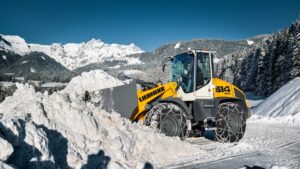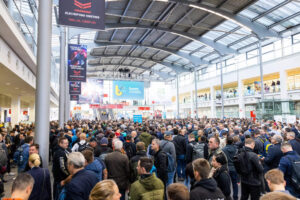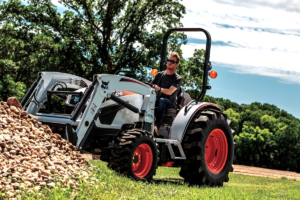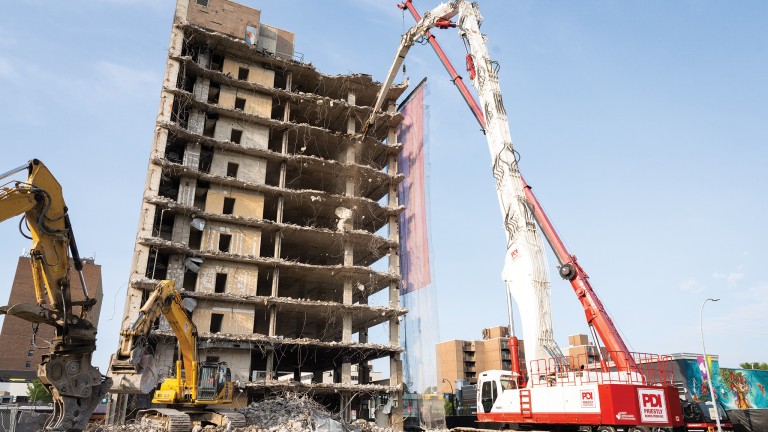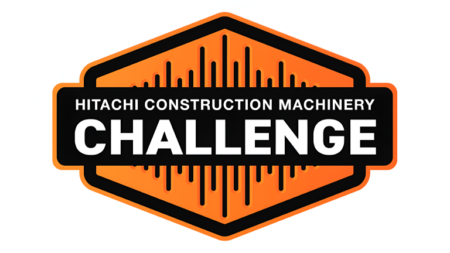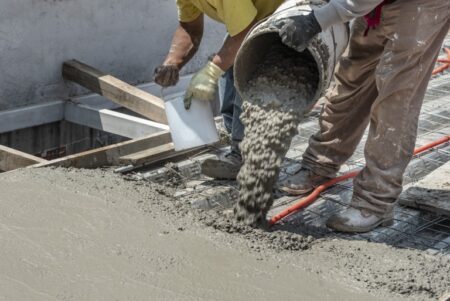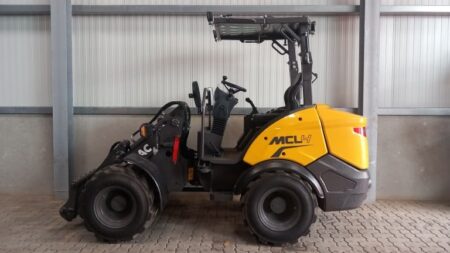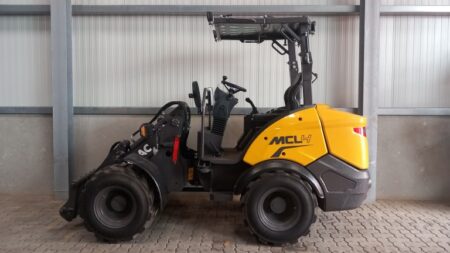Operator Matt Baker appreciates the big reach and line of sight that he has when working in the KOBELCO SK1600D.
Mack Plovie
PDI thrives on challenging demolition projects
This particular project, a 140-foot-tall 10-storey building with adjacent two-storey ground level addition, was the first large project for Priestly Demolition in Calgary. Located on the corner of 17th Avenue and 4th Street, this once bustling office building did not qualify for the office demolition incentive program grant, but is certainly part of the overall picture of revamping the downtown core.
“This is our first big project in downtown Calgary. It’s helping PDI establish ourselves and we are really excited to perform this with our big high-reach machine,” says Bayata.
Planning for this 10-storey demolition started in 2022, with PDI mobilizing in March 2023 to begin two months of abatement work removing hazardous asbestos materials from the interior. Once complete, the remaining interior was gutted and all materials dropped down the elevator shaft where a skid steer loaded out material into bins and onto highway trucks. This particular project certainly didn’t come without its challenges, but Priestly thrives on the challenge that demolition presents.
“One of the challenges we had with this project was the fact there were no engineering records or blueprints on file for the building. Our in-house engineering team used scanners, computer-based modelling software, and performed test cuts into the building’s structure to determine rebar presence and type, concrete thickness, and overall structural condition of the building as it has aged,” explains Cesar Ortiz, lead engineer with Priestly Demolition Inc.
PDI has an in-house engineering team, and by using Building Information Modelling software (BIM) to scan and model buildings, PDI was able to produce an engineering model of the building, make pertinent calculations, and provide 3D structural drawings for demolition planning. In the scenario of this 10-storey building with a 2-storey addition, these in-house resources proved to be incredibly advantageous.
Once the building was stripped of all materials down to a concrete and rebar skeleton, the high-reach excavators and other equipment moved in to start demolition. Demolition on this project began with removal of the 2-storey adjacent building and associated underground parking. Once complete, there was room to stage the KOBELCO machine for the main demolition. PDI used a crane to remove pre-cast concrete panels that formed the building’s facade, and then the KOBELCO SK1600D had its chance to shine.
Starting on floor eight and working up to the roof, the machine removed floors then collapsed structural columns and beams inward. Surrounded on three sides by active roadways with vehicular and pedestrian traffic, in addition to a restaurant 10 feet away on another side, PDI’s people and safe demolition practices were really put to the test. PDI used two cranes to hold up large screens to prevent any demolition material from leaving the site footprint. One 100-tonne crane held up a 127-foot screen and a 65-tonne crane held up an 80-foot screen adjacent to the demolition excavator as it worked the upper floors. After the KOBELCO machine removed upper floors, support equipment including a CASE CX460 with 98-foot Jewel high-reach boom and Komatsu PC490 with Atlas Copco processor handled the lower floors. Nearly everything in the building was recycled – from concrete and rebar to wood and other metals.
Successful projects like this, and the investment in people, safety, and machines, to complete them, are a fine example of Priestly Demolition’s capabilities as the company continues to grow into Western Canada and other regions of North America.
Mack Plovie is the president and chief dirt enthusiast of Earthmovers Media Group.
Read the full article here

